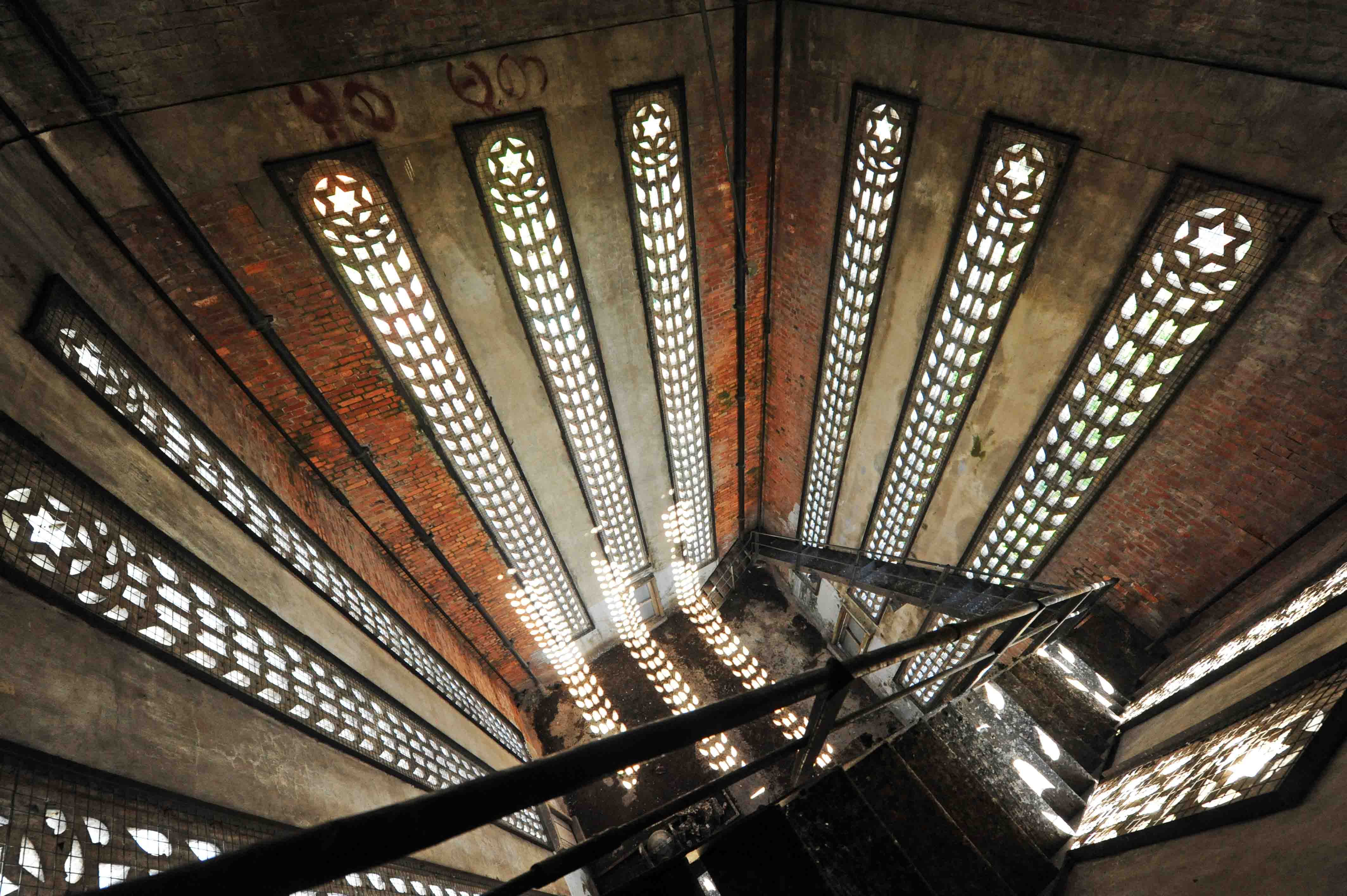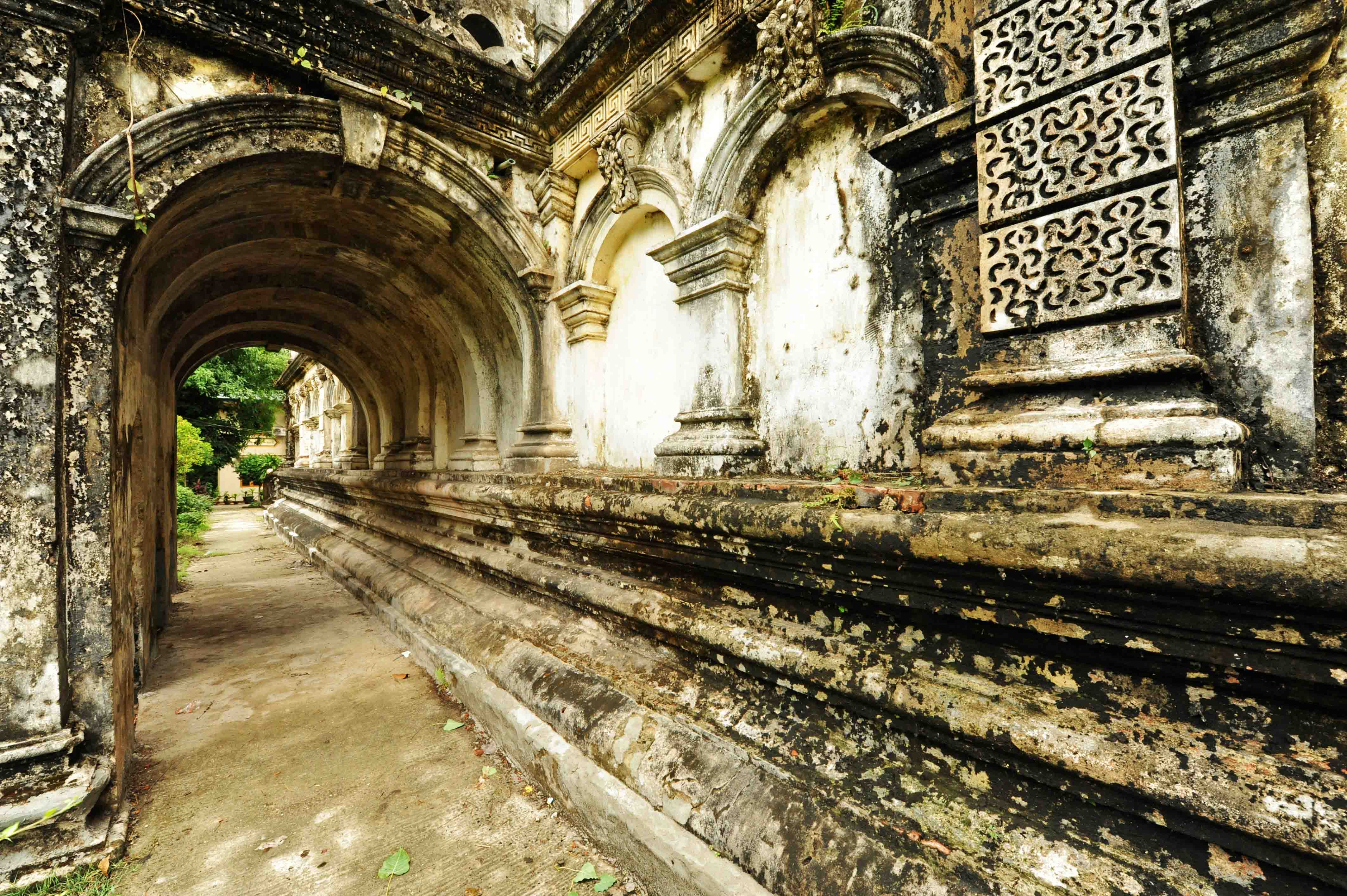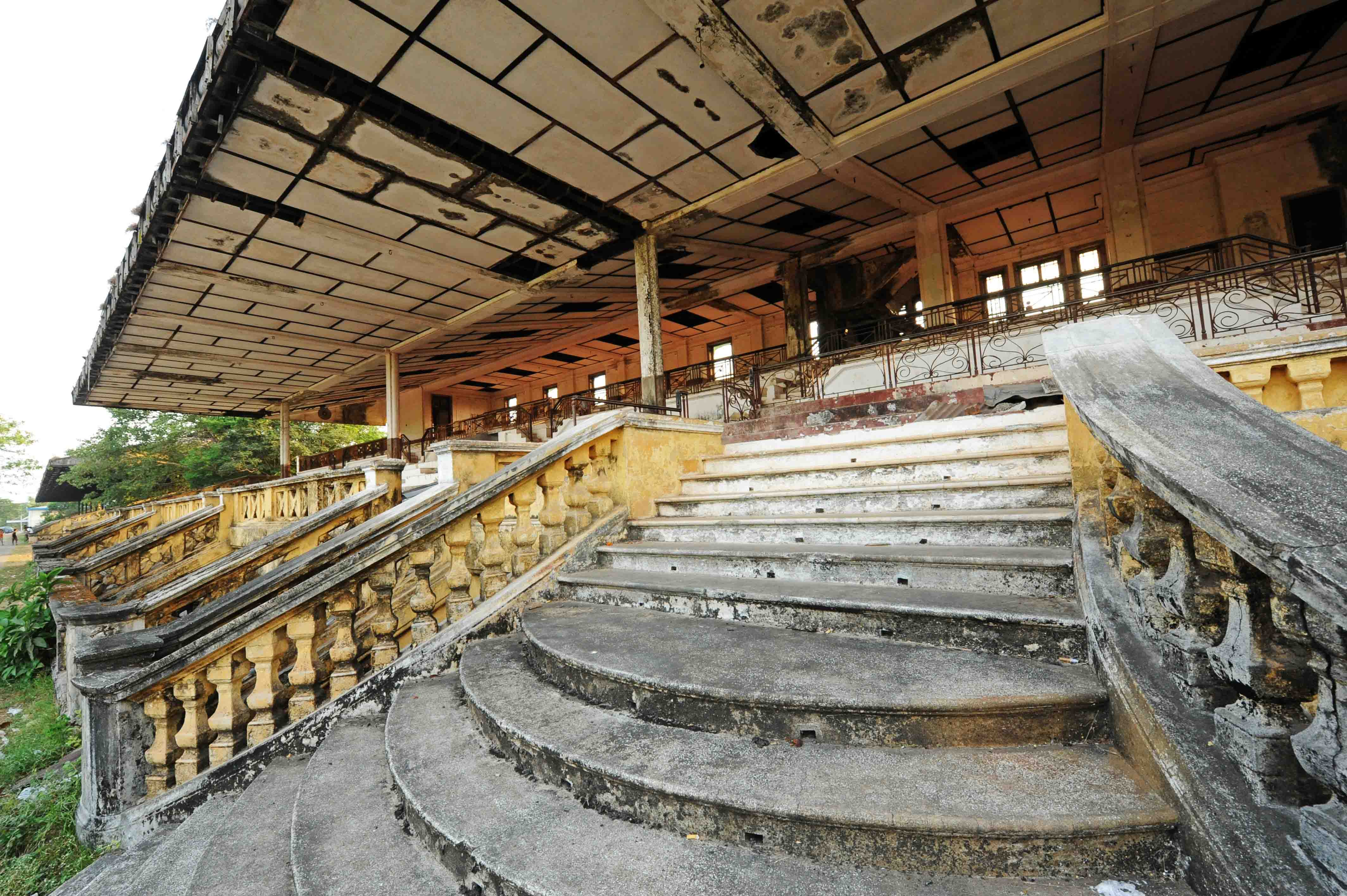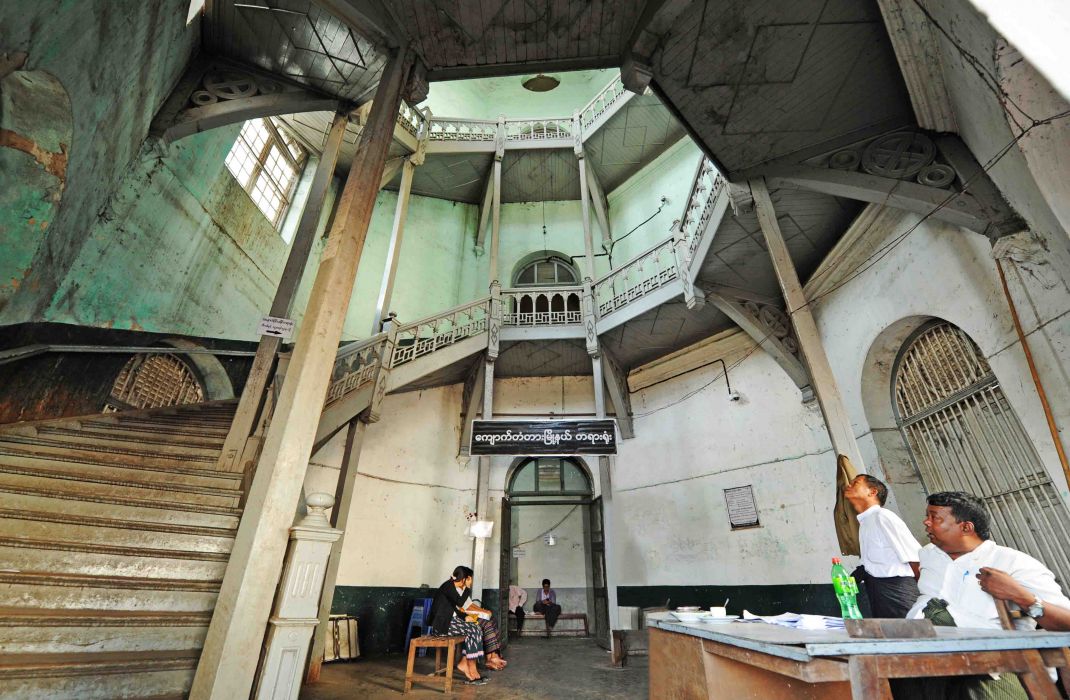Men look up the winding staircase of Kyauktada Divisional Court on Pansodan Road. Photo / Philip Heijmans
This weekend, Yangon-based photographer Philip Heijmans exhibits images from his upcoming book Relics of Rangoon – giving readers a peek inside nearly 200 of the city’s most fascinating colonial structures.
The show runs Saturday and Sunday from 10am to 6pm at the YWCA on Bogalazay Street. For more details, see the Facebook event.
We got the low-down from Heijmans ahead of the show.
How did you come up with the idea for Relics of Rangoon?
I thought the idea for the book was quite obvious really. Having moved to Yangon in 2013, it surprised me that there was no comprehensive account of the city’s architecture, aside from bits and pieces. Over time, I would come to tour several of the buildings, taking as many pictures as I could, and eventually it just made sense to go see as many as possible and try for a book.
The city is renowned for its romantic cityscape — with weather-beaten, rundown structures that have largely remained unchanged since they were built — and to bring light to the otherwise lost history of these buildings with artful new photographs (and some old) struck me as the best way to encompass what Yangon is all about.

Looking down from the bell tower of Yangon University’s famed Judson Chapel. Photo / Philip Heijmans
How did you choose which buildings to shoot?
I largely just worked off of the YCDC’s list of 189, but it is by no means the final list. A number of structures like the Kyaikkasan Racetrack in Tamwe, the Pegu Club and the Bombay Burma Press building downtown are all examples of significant structures that are not protected and deserve attention. I’ve also included a number of old villas belonging to important tenants for good measure.
Which was the most interesting building to shoot, and why?
Getting to see the Secretariat all on my own for a morning was simply brilliant and a memorable occasion for me, but that’s obvious really. It was finding the hidden gems that really captured my attention. The Aung Shwebontha Dhamma Beikman Monastery in Mayangone Township stunned me. A meditation hall converted into a library, it was really something to study its original façade: complete ornate Corinthian columns, a series of decorative arches and three sprawling, multi-entrance staircases — really inspiring to see such a beautiful structure being used for a great purpose.

Beneath the northern staircase at the Aung Shwebontha Dhamma Beikman Monastery in Mayangone Township, built in 1918. Photo / Philip Heijmans
How easy was it to access these areas, some of which are off-limits to the public?
Being that I wanted the book to include both the façade and interior of the buildings, there were some problems. Getting access to many of these buildings was a bitch. Most of the time I was simply thrown out of places and resorted to some methods I won’t go into here. Government buildings were predictably the worst to deal with and continue to be. In contrast, religious structures were the easiest and I met some really great, helpful people along the way who were happy to share their experiences with me.
What sort of relationship did the people living in the buildings, or taking care of them, have with the space?
Well, most of the time it was pretty favorable. Religious buildings make up for about half of all the buildings I covered and they mostly receive ample funding from the community, so not many complaints there. The problem comes with residential buildings where there are a slew of problems that prevent proper upkeep, from confused title issues to greedy owners who refuse to allow tenants to take care of their quarters so they can convince authorities to let them knock the buildings down to develop new, more profitable projects. 




